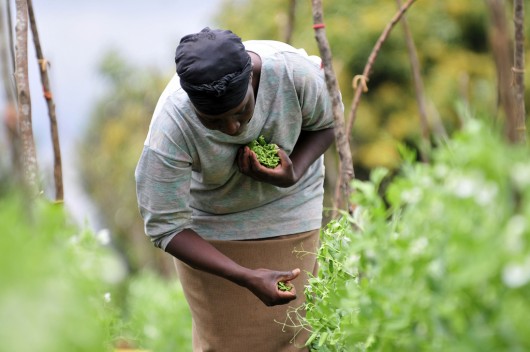Heat-Mapping for D.C. Food Insecurity

The federal capital of one of the most powerful nations in the world is unfortunately also home to some of the worst food insecurity in the nation.
According to D.C. Hunger solutions — an initiative of the Food Research and Action Center — one in eight households, or 13.4 percent, in the District of Columbia struggles with hunger. In the surrounding suburban areas — one of the richest in the country — the number of people facing food insecurities has risen considerably in the past 8 years. Almost 346,000 residents in the DMV suburban area now live in suburban poverty.
These statistics have fed an exigent need to find new and improved methods to document, plan and combat hunger in the Greater Washington metropolitan area. The Capital Area Food Bank (CAFB) serves the food security needs of this area, including the District of Columbia as well as counties in neighboring Maryland and Virginia. One of the largest obstacles in allocation of resources in this area is the disparity within the regions, as well as the undocumented presence of poverty and food insecurity.
In the midst of one of the most affluent neighborhoods in the country is what has been labelled as pockets of hunger. Establishment of food banks and food distribution programs in one part of the county or city is not enough to reach out to the entire population in need of assistance, particularly children.
The solution to this problem has been the heat mapping technology for hunger in the Washington metro area. Designed by Michael Hollister for the CAFB, the technology maps the amount of food distributed in every part of the Greater Washington region; the amount of food needed is layered on the map as well.
The data is obtained through census statistics, USDA records, Feeding America’s Map the Meal Gap and food assistance programs’ inventories. The hunger map then shows the areas in greatest need with calculated food insecurity rates. The layered statistical data is color-coded, as in a heat map, for easier visual interpretation.
The meticulously worked out data and the subsequent mapping technology have allowed for more uniform distribution of food resources. In the District of Columbia, the heat map has allowed for a partnership between the CAFB and another D.C. nonprofit, Martha’s Table, to prioritize school locations in the area for provision of healthy lunches.
In Virginia, the heat mapping visualization has helped the CAFB’s northern Virginia branch to access mobile home parks. These mobile home parks, like Marumsco in Woodbridge, had been long overlooked by the food distributors as they are not very visible or well-known, in-need areas.
The map of the region with visually obvious red zones brought the needs of this community to the attention of CAFB. Thanks to the heat map, there is now a food bus at Marumsco distributing nutritious lunches to kids in need.
The objective of the heat mapping method is to effectively visualize the areas with unmet food needs. The misled perceptions of affluence — in the suburban areas especially — have in the past hindered the efficient distribution of food to areas in actual need. But with the contrivance of heat mapping, the food banks in the capital area will be able to extend a helping hand to everyone in need.
– Atifah Safi
Sources: Washington Post, Capital Area Foodbank, WAMU, Huffington Post, FRAC
Photo: Flickr
